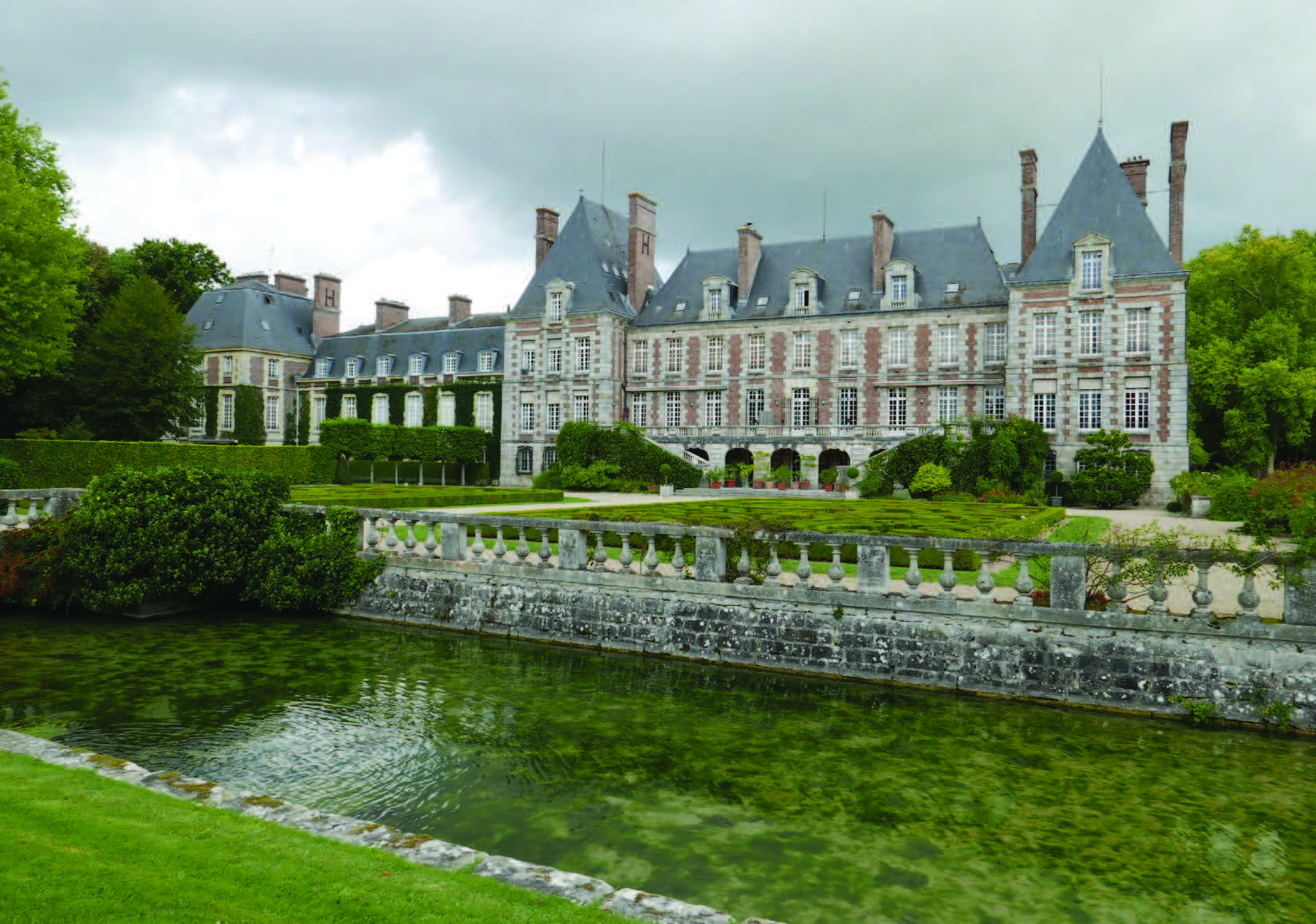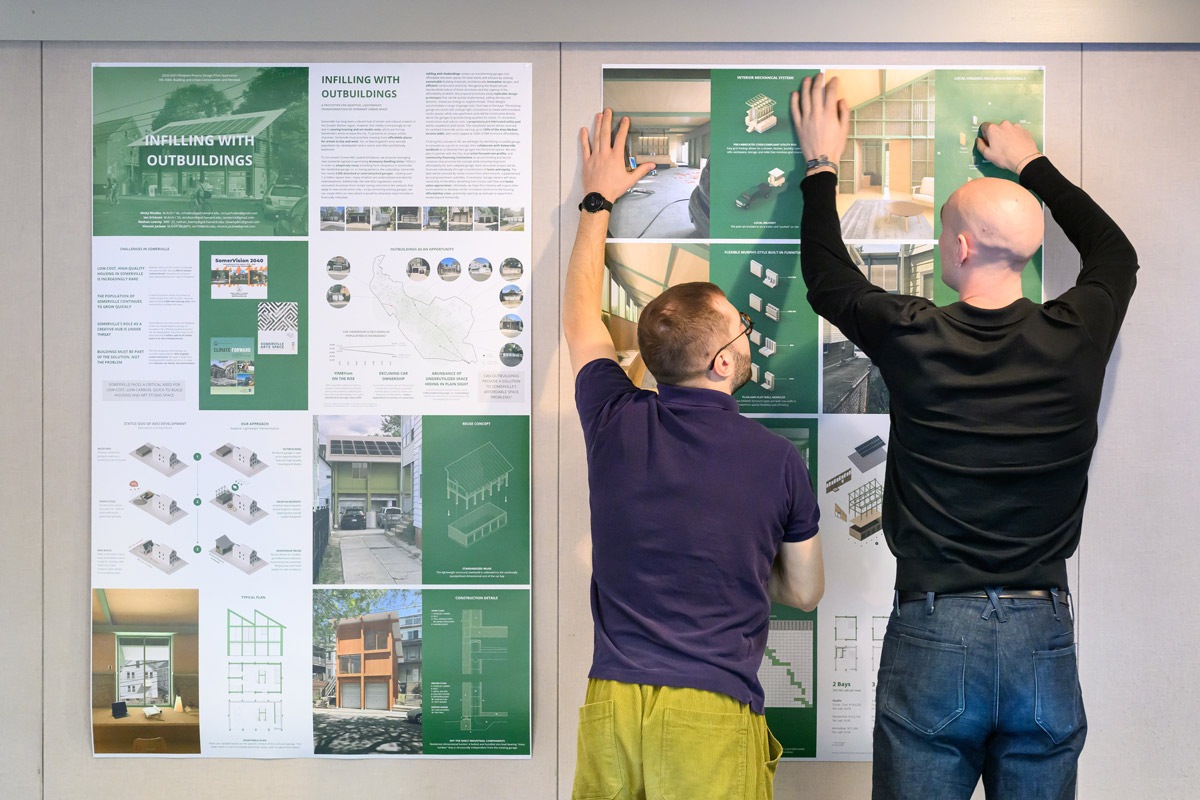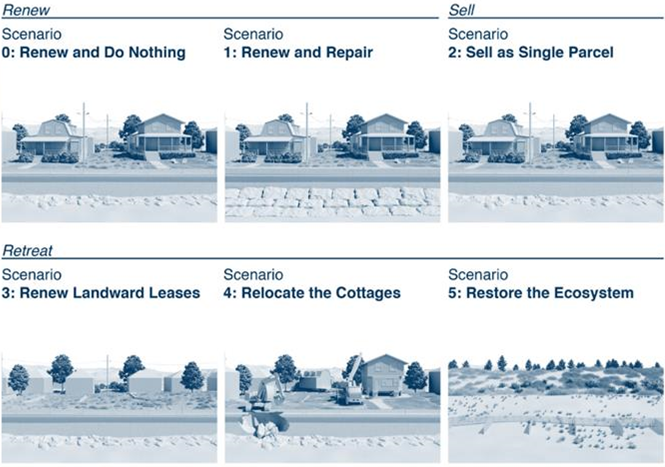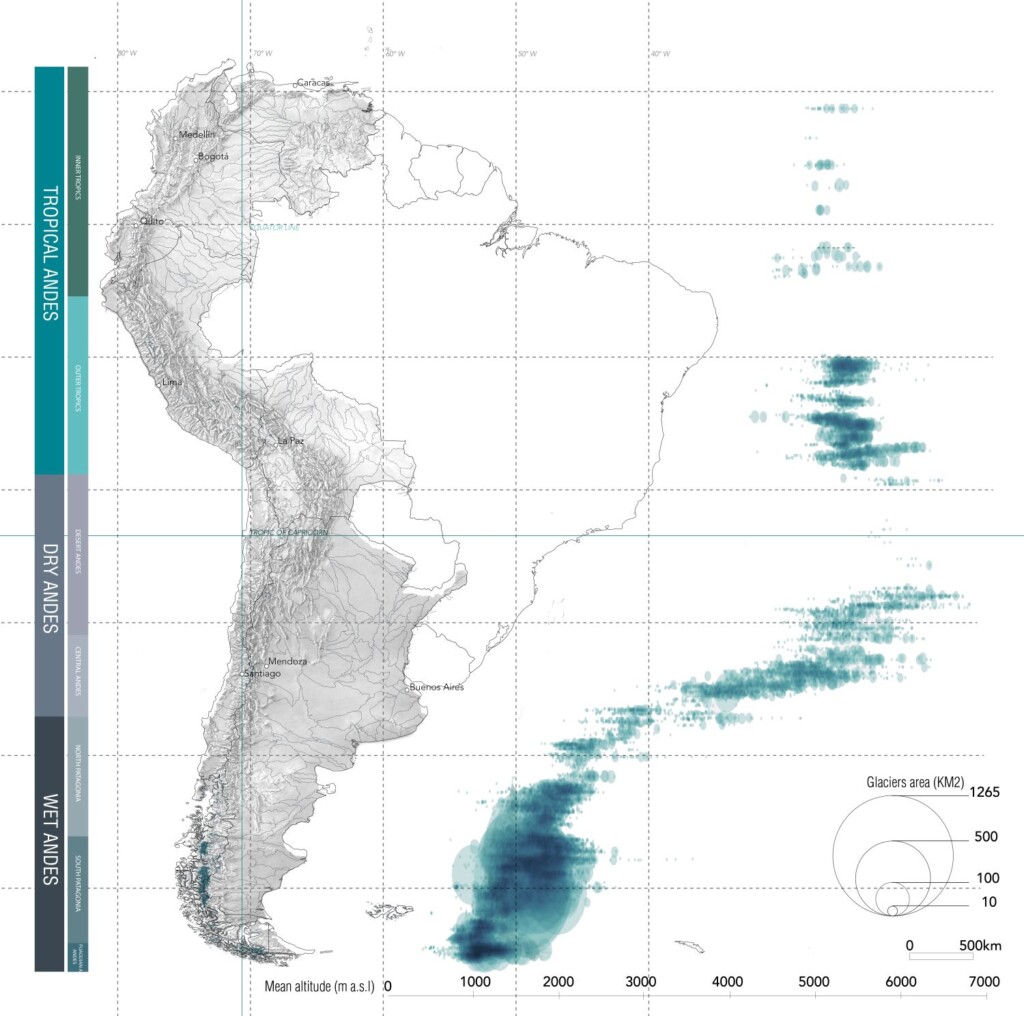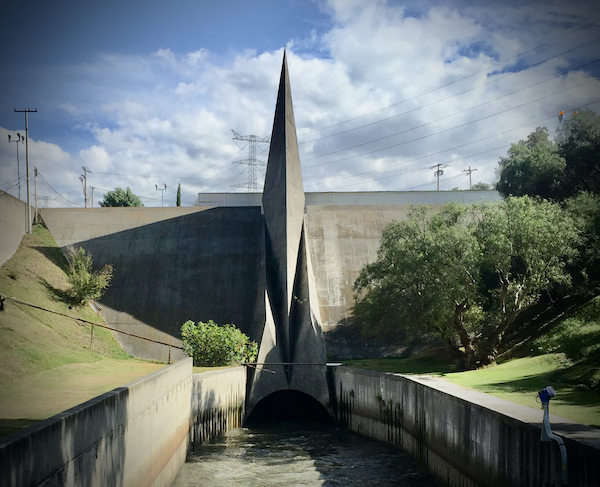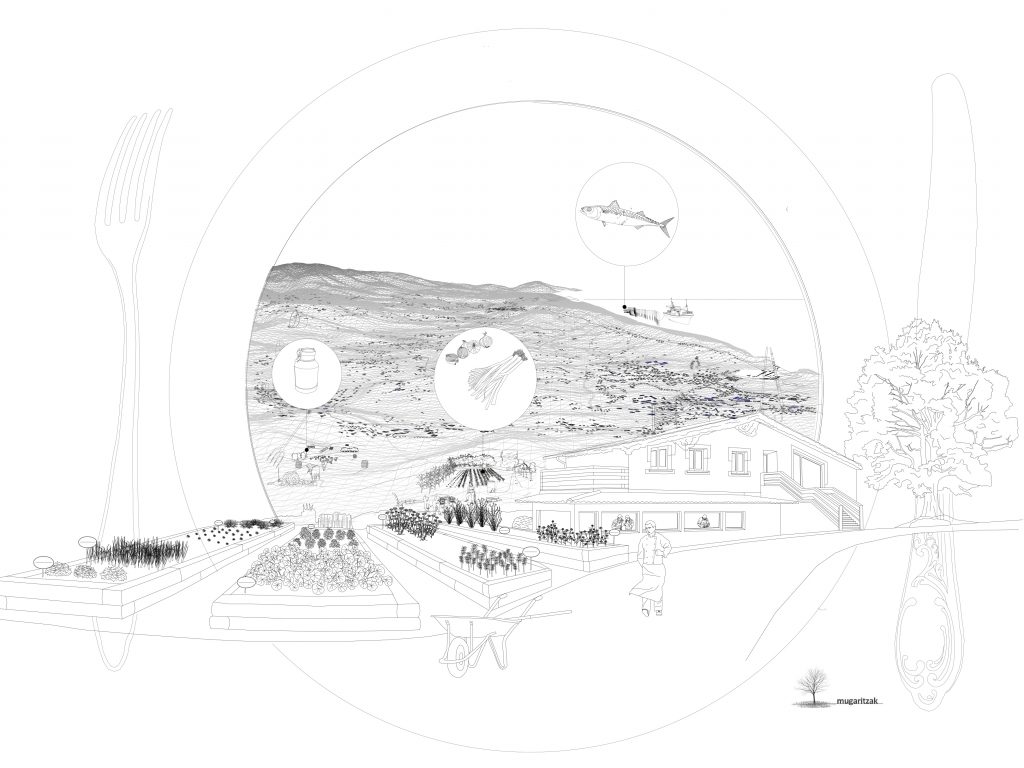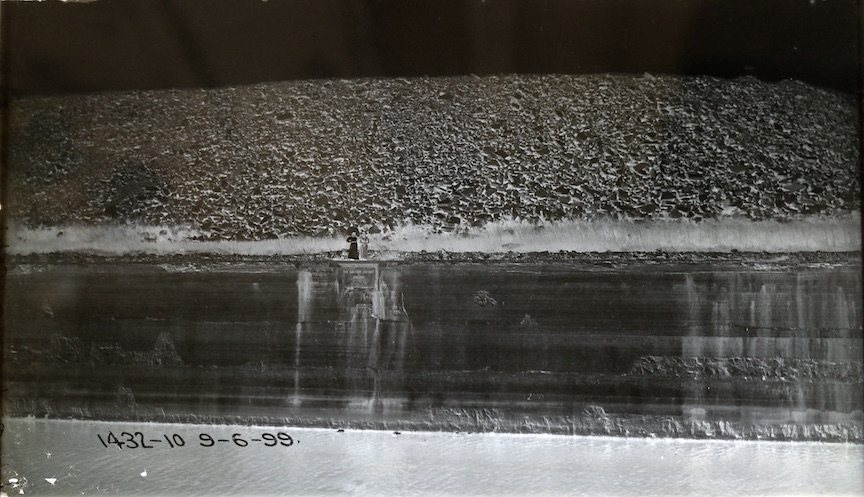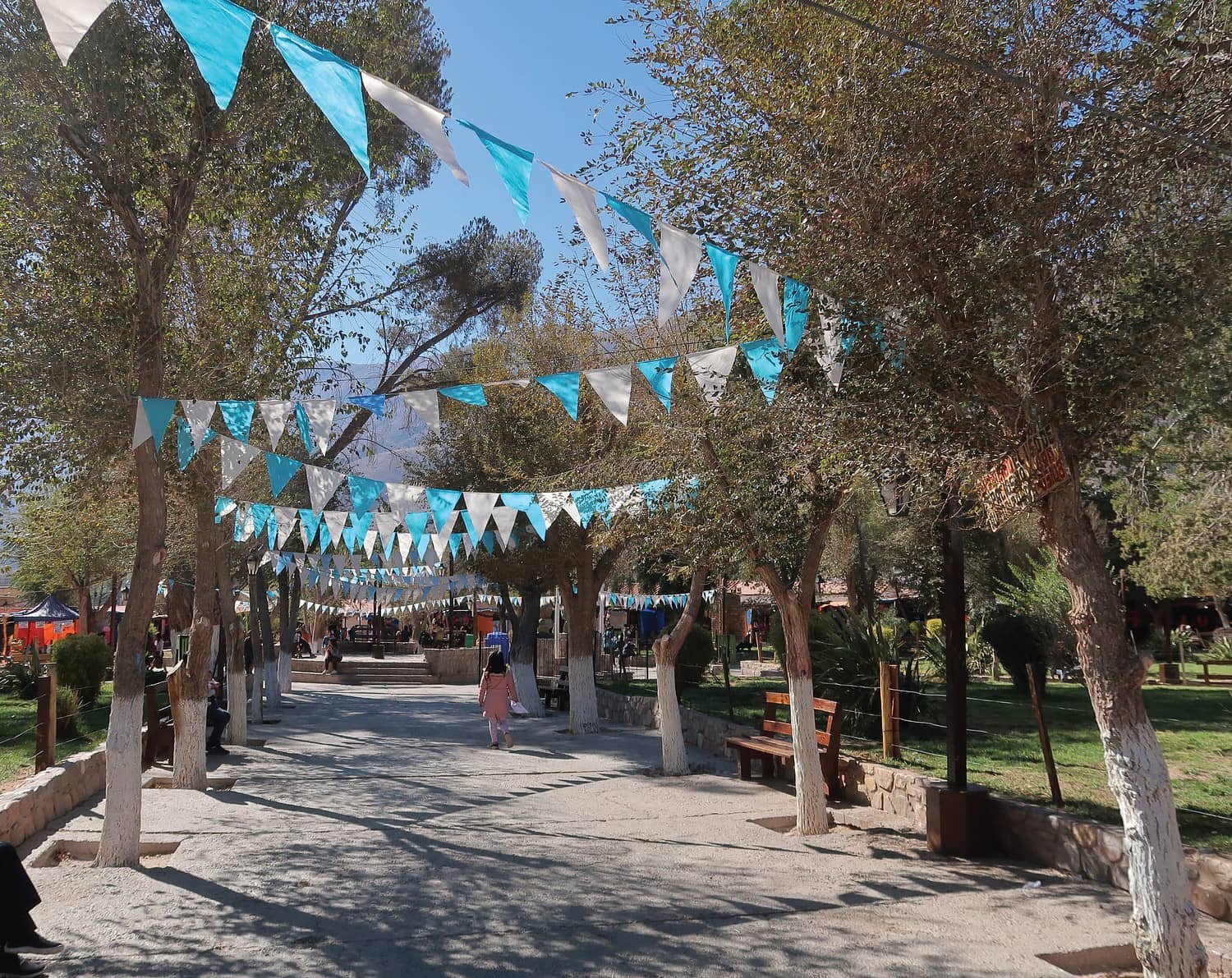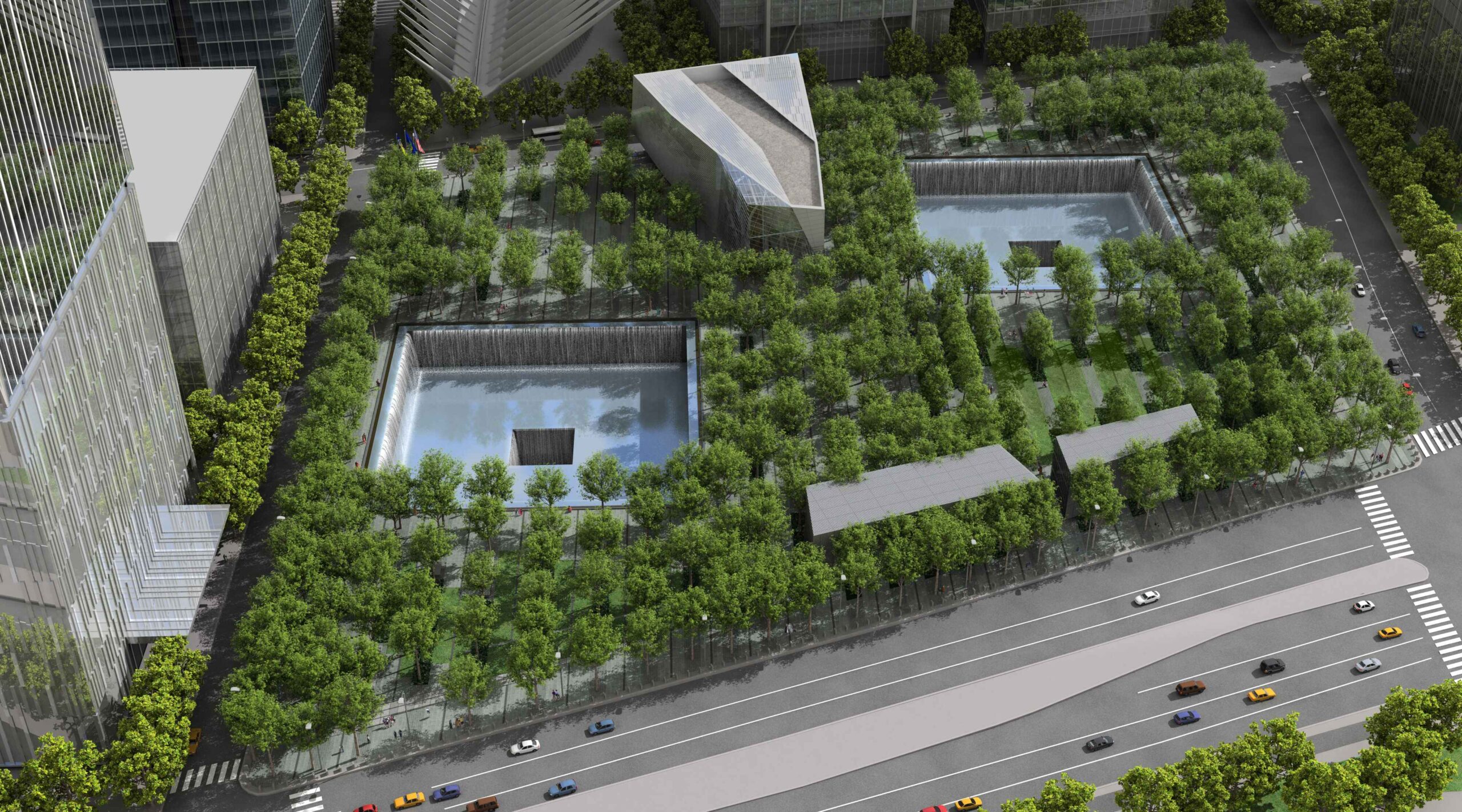GSD-Courances Design Residency Program
The GSD-Courances Design Residency Program is fully funded through the Penny White Project Fund and the generous support of the Château de Courances. The program affords students the chance to spend six weeks living and working in the certified organic farm, gardens, and park at the Château de Courances, a sixteenth-century estate located in the Île-de-France, fifty kilometers south of Paris. The residency will expose students to new modes of thought, discourse, and engagement on such topics as sustainable land management, agriculture, conservation, stories of place, and the role of historic sites in contemporary society.
About
Overview
The GSD-Courances Design Residency Program is fully funded through the Penny White Project Fund and the generous support of the Château de Courances. The program affords students the chance to spend six weeks living and working in the certified organic farm, gardens, and park at the Château de Courances, a sixteenth-century estate located in the Île-de-France, fifty kilometers south of Paris. The residency will expose students to new modes of thought, discourse, and engagement on such topics as sustainable land management, agriculture, conservation, stories of place, and the role of historic sites in contemporary society.
The structure of the residency is fundamentally hands-on. Students will work directly alongside farmers and landscaping crews, learning land management techniques and practices through direct experience. Students will also pursue an independent project or research topic depending on their own personal interests and explorations.
Two positions will be offered each year. The duration of the residency will be for six weeks from approximately the beginning of June to the middle of July. Project proposals open in the mid Fall semester and are due in the late Fall. Shortlisted candidates will be interviewed as part of the application process. Winners are notified by Winter Break and are announced publicly with the Penny White Project Fund awardees in mid Spring.
Eligibility
All students enrolled in the Harvard Graduate School of Design are eligible to submit project proposals that address the objectives of the GSD-Courances program. Although all GSD students are eligible, it is expected that preference will be given to students in the Department of Landscape Architecture. The Committee looks favorably upon collaboration between students in Landscape Architecture with other design disciplines.
Students may work individually or in teams, and in conjunction with or independently from their coursework.
The program welcomes projects that promote research at the intersection of systemic inequity and social and environmental justice, and that focus on the advancement of the political agency of landscape architecture as an activist, collaborative, and participatory practice.
Application Instructions
For for deadline, selection criteria, project application, and deliverables information, please visit GSD Now.
Questions may be submitted to [email protected].
Selection Committee
Committee Chair
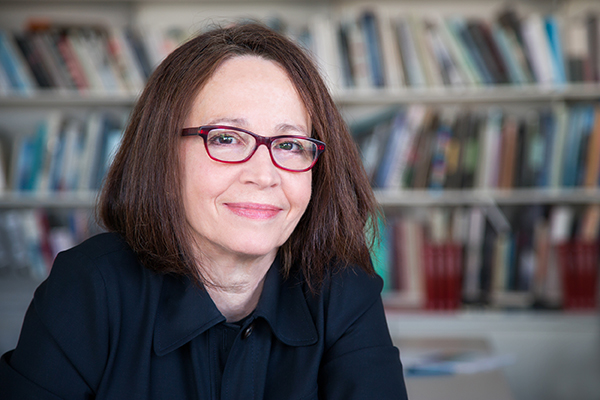
Anita Berrizbeitia
Professor of Landscape Architecture
Past Projects
Past recipient projects are listed below. To review completed projects, please contact the Loeb Library Archives.
2017
Sophie Geller (MLA I ’17)
2018
Mariel Collard (MLA I AP/ MDES ’19)
Juan Davide Grisales (MLA I AP/ MDES ’21)
2019
Yoni Angelo Carnice (MLA I ’20), “The World Was My Garden: The GSD-Courances Design Residency”
Michael Cafiero (MLA I AP ’20), “I. Regenerative Connections”
2020
Caroline Craddock (MLA I ’21), “Balancing Historic Conservation and Climatic Adaptation at the Chateau de Courances”
Dominic Riolo (MLA I ’21), “Courances as Sustaining, Proto-Modernist Garden”
2021-22
Award not offered
2023
Anne Field (MLA I ’25), “Field to Forest”
2024
Garrett Craig-Lucas (MLA II ’25), “Currents: Documenting Connections Between Perception, Movement, and Water Flow in Courances”
Jie Zheng (MLA I ’24), “Whispers of Flow: An Ecology Odyssey Through the Water of Courances”
2025
Mara Basich-Pease (MLA I ’27), “Sensing Scent-Scapes”
Valentine Geze (MDES ’26), “Deposits of Memory: Sediment and Hydrology in the Courances Landscape”
Noam Baharav (MLA I ’27), “Garden:Farm”
MLA Curriculum Details
Studio Culture Policy
Policy Overview
Harvard University and the Graduate School of Design aspire to provide education and scholarship of the highest quality—to advance the frontiers of knowledge and to prepare individuals for life, work, and leadership. Achieving these aims depends on the efforts of thousands of faculty, students, and staff across the University.
Some of us make our contribution by engaging directly in teaching, learning, and research, others of us, by supporting and enabling those core activities in essential ways. Whatever our individual roles, and wherever we work within Harvard, we owe it to one another to uphold certain basic values of the community:
- Conscientious pursuit of excellence in one’s work
- Respect for the rights, differences, and dignity of others
- Honesty and integrity in dealing with all members of the community
- Accountability for personal behavior
Achieving the mission of the GSD requires an environment of trust and mutual respect, free expression and inquiry, and a commitment to truth, excellence, and lifelong learning. Students, program participants, faculty, staff, and alumni accept these principles when joining the Harvard Graduate School of Design community.
Community members have a personal responsibility to integrate these values into every aspect of their experience at the GSD. Through our personal commitment to these values, we can create an environment in which we all can achieve our full potential.
(Harvard GSD Community Values Statement)
The goal of the GSD studio teaching method is to achieve a free exchange of ideas in an atmosphere of mutual respect.
At the core of all of our activities at the GSD are our collective values of excellence, respect, honesty, integrity, and accountability. The GSD has adopted a Community Values Statement which is regularly communicated to all members of the GSD community.
Policy Document
The Dean, chairs, and administration have developed written procedures and policies for core and option studios that are sent to all instructors before the semester begins. The intent of the procedures and policies is to provide clear guidelines and instruction to faculty and also to convey our philosophy about studio instruction; the goal of the studio teaching method is to achieve a free exchange of ideas in an atmosphere of mutual respect. Information is collected and posted to provide critical information to aid students in their understanding of the practical and pedagogical considerations that go into the studio system at the GSD. The studio culture policy, along with all related information and guidelines, is a product of collaboration and time between faculty, staff, and the Student Forum and is meant to assist and provide support for students during the studio sequence.
Download the GSD’s Studio Culture Policy (PDF).
Plimpton-Poorvu Design Prize
Find deadline and submission information.2025 Prize Recipients
First Prize
Kiara Nahomy Wong Siu (MAUD), Teresa Ka Weng Lai (MAUD), Henry Black (MUP), R. Kofi Boakye Bempong (MUP & Master in Public Admin).
Project – Mumbai INformal
Luxury living in Mumbai hinges on the vertical, while informal living lays on the horizontal. Mumbai INformal bridges these contrasting realities by introducing a multi-use podium typology that transforms ‘co-existing’ into meaningful ‘co-living.’ This approach respects and celebrates the livelihoods, aspirations, and daily rhythms of the residents who call this area home.
Second Prize
Andres Lira Vigneaux (MArch II), Brittany Arceneaux (MRE), Noemi Iten (MDes), Dennis Sola (MArch II).
Project – ARCA
ARCA is a housing construction system designed to make gentle density both feasible and compelling by rethinking how housing is built – combining architectural precision, material innovation, and contextual design. ARCA’s pilot project is situated on a standard R1 lot in Los Angeles’s Playa del Rey neighborhood – a vacant parcel that embodies both the challenges and opportunities of low-density zoning.
Third Prize
Nicky Rhodes (MArch I), Ian Erickson (MArch I), Nathan Lowrey (MRE), Vincent Jackow (MArch/MIT).
Project – Infilling with Outbuildings
Infilling with Outbuildings centers on transforming garages in Somerville, MA into affordable live-work spaces for local artists and artisans by utilizing sustainable building materials, architecturally innovative designs, and efficient construction practices. Recognizing the dispersed yet standardized nature of these structures and the urgency of the affordability problem, the proposal prioritizes easily replicable design prototypes that can be quickly implemented, adding density and dynamic, mixed-use energy to neighborhoods.
Past Recipients
First Prize
Ben Parker (MAUD ’24), Christopher Oh (MAUD ’24), Ziyang Dong (MArch ’25), Jasmine Ibrahim (MRE ’25). Project – SILVERLINE: A New Model for Data Centers in the Age of AI: Verticalities at the Edge of the Cloud. Data centers underlie all the most important technological developments of recent decades, especially emerging innovations like generative AI. Yet for all their transformative impact, data centers are remarkably conventional buildings. Silverline reconceptualizes data centers, aspiring to preserve land, minimize fossil fuel emissions, respect cultural context, and strengthen community engagement whilst being profitable. Silverline’s new-generation infrastructure supports low latent applications at large volumes and utilizes technological innovations to increase energy efficiency and price-to-performance.
Joint Second Prize
Aaron Smithson (MArch + MUP ’25), Cat Chen (MArch ’25), Maggie Weese (MUP + MPH ’24). Project – Walnut Park Place: Affordable Ownership Opportunities for the Egleston Square Community. Walnut Park Place is a 29-unit affordable homeownership development in the Egleston Square area of Roxbury. Designed with sensitivity to both the physical context and the stated needs and desires of residents, the project leverages both public sources and residential cross-subsidy to provide middle-income Roxbury families with an increasingly rare opportunity to establish enduring roots in a fast-changing community. Walnut Park Place utilizes a family-centered design approach, incorporating a ground-floor daycare, a protected play space, larger units, and open-unit floor plans to better serve the needs of residents. The site’s “disguised density” approach strategically distributes the project’s massing to increase affordable ownership opportunities in Roxbury while ensuring the project remains contextual.
Chandler Caserta (MArch ’25), Austin Sun (MLA/MArch ’24), Kei Takanami (MArch ’25), Amber Zeng (MArch ’25). Project – Connecting Gilman Square: A New Housing and Green Space Development. Connecting Gilman Square proposes the transformation of two underutilized lots in Somerville into a new transit-oriented mixed-use development and public park. This project aims to create a community identity around a new Green line transit station by introducing market rate and affordable housing, a public park, a grocery store, local cafes and restaurants, an artist workshop, and space for non-profits. This project introduces 150 units of studios and two-bedrooms that target the city’s growing population of young professionals and graduates. The strategy to pair a housing project with a public park considers both the financial viability and social benefits for Somerville and the Greater Boston area. Using a capital stack of equity, debt, and grants to support the new green space and infrastructure, Connecting Gilman Square will transform this previous industrial site into a new public park and mixed-use building.
Honorable Mention
Miguel Lantigua Inoa (MArch II + MLA AP ’24), Jaime Espinoza (MRE ’25), Chris James (MRE ’25). Project – Monterrey’s Urban [River] Forest: Improving Microclimatic Conditions through Public-Private Partnership Vertical Development. In conjunction with the revitalization of Monterrey’s Santa Catarina River as a robust and vital public space, this proposal seeks to address the dire climatic and housing challenges the city faces. By harnessing public and private financing, the project generates mixed-income housing, produces climate resilient infrastructure, initiates the city’s urban forest plan, and integrally contributes to the public realm. More specifically, the financial underwriting leverages Monterrey’s market forces and sets an important precedent for catalytic development that is in harmony with sustainable, ecological, and civic goals.
First Prize
Xinxin Cheryl Lin (MArch II ’24), Vivian Cheng (MAUD ’23), and Pinyang Paul Chen (MRE ’24, MLAUD ’23). The Gansevoort: Design for Longevity is a mixed-use residential complex in Manhattan that investigates the impact of extended lifespans on design and environmental factors, with an emphasis on holistic well-being. This pioneering development fosters healthy urban planning and enhances the longevity of its residents, neighborhood, and environment. Its economic strategy focuses on sustainable, cost-effective modular building methods, and reimagines the block’s layout to create intimate, human-scaled spaces, improving daily activities and pedestrian access.
Second Prize
Maddie Farrer (MArch I ’25), Madeleine Levin (MUP ’23), and Arielle Rawlings (MUP ’23). Boyd Street Gateway is a proposal to develop new affordable housing, social services, and community space in Portland, Maine, aiming to restitch neighborhood connections through a respectful design that enhances housing stability while rooting the currently disparate community core of the East Bayside neighborhood.
Honorable Mention
Heejin Park (MAUD), Terry Kim (MUP), Aelin Shaoyu Li (MDes ’24), Claire Tham (MUP), and Li Zhou (MDes ’23). Truly, Oregon! Empower Lloyd Center, Portland, OR. This project proposes the development of the Lloyd Center, located in the Lloyd District, Portland, Oregon. The Project will encompass “Sportainment” as the core concept of the family amusement park, where visitors can use all the indoor attraction points for a flat-fee ticket. The surrounding retail space will accommodate local chains, boutique restaurants, and cafes. The Project aims to shape a community of memory, care, and a sense of belonging based on a deep understanding of local culture and market demand.
First Prize
Hana Cohn (MLA I ’24), Youngju Kim (MAUD ’23), Arami Matevosyan (MDes REBE ’22), and Naksha Satish (MAUD ’22). Their project, Bracing Peter Bracy: Reclaiming Power & Retaining Roots (BPB) in New Rochelle, NY, is sited in the historic Black neighborhood of Pugsley Hollow, founded in the 1800s by descendants of the earliest freed slaves on record. The development is guided by the idea that housing is more than a physical structure or financial asset—it’s a powerful economic engine for local communities. With that as a principle, BPB puts forward a non-privatized vision to redevelop the only remaining traditional public housing project in New Rochelle. The proposal challenges the cascade of displacement and gentrification by deploying “strategic bracing” measures developed through conversations with local residents, the New Rochelle Municipal Housing Authority, and other affordable housing experts. Strategies include the establishment of a community housing trust and the integration of a spectrum of affordable housing typologies. Integrated by a community corridor of amenities, the plan offers opportunities for greater economic freedom, empowerment, and strong roots for the long-time residents of Peter Bracey to continue their life there and to leverage the potential of transit-oriented development in downtown New Rochelle.
Second Prize
Nicolas Carmona (MArch II ’22), George Guida (MArch II ’22), and Manu Moritz (MDes REBE ’22). Their proposal, Miami Gateway: Affordable Housing for Resilient Communities, proposes an interdisciplinary and intergovernmental plan in pursuit of housing security and climate resilience. Located in Miami, Florida, the project leverages publicly-owned vacant land to erect prefabricated cross-laminated timber dwelling units for residents living below the local area median income. Organized around key investments outlined by the Miami Affordable Housing Framework, the project develops community-oriented programs, leverages housing innovation funds, and supports new businesses while helping to fill the current deficit of 121,820 affordable units. The project is an exploration of the current American affordable housing landscape, which has tempered its civic ambitions through deference to “the market.” Can we develop inclusive, quality, affordable, and climate-sensitive housing as a public investment in our common future?
Third Prize
Vicky Chen (MAUD & MDes REBE ’22) and Xudong Zhu (MAUD ’22). Their project, Urban Health Catalyst: An Innovative Health Themed Development Model in Miami Health District, provides an accessible living environment for healthcare employees by introducing mixed-income housing and health-themed programming to the institutional Health District, a developing neighborhood in Miami that is home to the second-largest concentration of medical and scientific facilities in the United States. The proposal utilizes the existing healthcare resources to stimulate the surrounding distressed neighborhoods. By bringing 448 units of mixed-income housing and medical community-oriented programs to the current single-use district, Urban Health Catalyst is meeting market needs to provide a quality, healthy environment for locals and future tenants.
Honorable Mention
Heejin Park (MAUD), Terry Kim (MUP), Aelin Shaoyu Li (MDes ’24), Claire Tham (MUP), and Li Zhou (MDes ’23). Truly, Oregon! Empower Lloyd Center, Portland, OR. This project proposes the development of the Lloyd Center, located in the Lloyd District, Portland, Oregon. The Project will encompass “Sportainment” as the core concept of the family amusement park, where visitors can use all the indoor attraction points for a flat-fee ticket. The surrounding retail space will accommodate local chains, boutique restaurants, and cafes. The Project aims to shape a community of memory, care, and a sense of belonging based on a deep understanding of local culture and market demand.
First Prize
Sarah Fayad (MLAUD ’20), Ian Grohsgal (MArch I ’21), and Dixi Wu (MDes & MArch I ’22). Their project, Building a Scalable Business in Data Centers, sets up a testing ground for a new scalable paradigm with a more human-centered approach and prepares for the 5G-driven future while addressing the current growing demand in urban areas. Located along the Ottawa River in Gatineau, Québec to take advantage of the booming tech presence in Canada East, the data center sits at the nexus of benefiting three groups: the tenant, the community, and the investor.
Second Prize
Daniel Garcia (March II ’20), Kyle Ryan (MDes ‘21), and Peeraya Suphasidh (MArch II ’20). Their submission, The Block, is a mixed-use, transit-oriented development proposal of a 10-acre shopping center in Allston, MA. Located at the new Boston Landing MBTA rail stop, this project envisions diverse spaces for living, working, and retail in the form of a new elevated urban square, forming the foundation for a 15-min city.
Honorable Mention
Andriani Wira Atmadja (MUP ’21) and Nadège Giraudet (MArch I ’21). Their project, The Dolvi Township Project in Raigad, India, aims to develop a sustainable residential prototype on a steep terrain next to the JSW Steel Plant in the Mumbai Metropolitan Region of India.
First Prize
MacKenzie Wasson (MArch I ’20). His project, Building Biras: A Hurricane Adapted Caribbean Resort, pairs a disruptive business model with unconventional architecture yielding new realms of opportunity for locals, investors, and resort guests in the British Virgin Islands.
Second Prize
Tessa Crespo (MDes Risk & Resilience ’20) and Stefan Bird (MIT MSRED ’20). Their project, El Mercado Modelo de Miami, embraces the rich Dominican Republic culture of eating and artisanship in public spaces to envision how a nonprofit multi-stakeholder cooperative can be an incubator and community asset for social and economic mobility in the Allapattah neighborhood of Miami.
Honorable Mention
Zehui Gong (MAUD ’20), Jing Hai (MAUD ’20), Daisha Martin (MUP ’20), and Sidharth Somana (MDes REBE ’21). Their project, Oasi Plaza, proposes a mixed-use development with new transport modalities that symbiotically merges high-density urban living with a bio-diverse marshland in Medford, Massachusetts.
First Prize
Sam Adkisson (MAUD ’19) and Hiroki Kawashima (MAUD ’19). Their project, Metro Strand: Renewed Vitality for Overtown in an Urbanizing Miami, proposes a smarter way for Miami’s continued urbanization, with the added complexity of climate change, to establish a better method for future inner-city growth for the impoverished community of Overtown.
Second Prize
Augustinas Indrasius (MDes ’19), Peteris Lazovskis (MArch ’20), and Thomas Schaperkotter (March ’20). Their proposal, Carbon Park, LA, reimagines how real estate investment may fuel social benefit and ecological sustainability by connecting private investment with public space to seek balance for investors, the downtown Los Angeles community, and California’s growing carbon economy.
First Prize
Georgios Avramides (MDes ’18), Duly Lee (MDes ’18), John Lee (MDes ’18), Emily Marsh (MUP ’18), and Alex Rawding (MUP ’18). Their master plan proposal, Port District Interbay: Seattle, aims to address Seattle’s social challenges through improved transportation systems and is designed to be an economic hub that links residential, office, retail, hotel, public space and trails, and connections to the surrounding community.
Second Prize
Dalia Alderzi (MDes ’19), Alaa Raafat (MDes ’18), and Carlotta Weller (MDes ’19). Their proposal, Glories Olivetti | Barcelona, Spain, revives the legacy of Olivetti, integrates with the existing 22@ innovation district, and becomes the gateway for two communities: El Clot and 22@ innovation district in Barcelona, Spain.
First Prize
Patricia Alvarez (MDes ’18), Lisa Hollywood (MAUD ’17), Chris Merritt (MLA II ‘ 17), and Lindsay Woodson (MDes & MUP ’17). Their submission, NoBe Nexo, re-envisions an 18-acre site in North Beach, Miami Beach as a mixed-use development that addresses sea-level rise, storm surge, and food insecurity issues.
Second Prize
Maxime Faure (MAUD ’18), Van-Tuong Nguyen (MDes ’18), and Carla Wijaya (MAUD ’18). Their proposal, The W, is for a mixed-use housing development on Boston’s North End waterfront that includes housing for students, young professionals, and single householders, and provides a publicly accessible landscape connection along the waterfront.
Anna Hermann (MArch ’17) and Felipe Oropeza, Jr. (MArch ’17). Their submission, Hotel Alexandra: Conservation and Redevelopment project, completed for the class “Fieldwork in Conservation Design” demonstrates a successful integration of design, feasibility, and implementation strategy.
Daniel Urban Kiley Teaching Fellowship in Landscape Architecture
Important Dates
The Daniel Urban Kiley Teaching Fellowship is awarded to an emerging designer who demonstrates a promising trajectory towards consequential work in the design of the urban public realm. The Kiley Fellow will be appointed Lecturer in Landscape Architecture for the academic year. While the fellowship is awarded competitively on an annual or semi-annual basis, successful fellows are eligible to have their academic appointments renewed for a second year at the rank of Lecturer, dependent upon review of their teaching, research, and creative practice.
The Daniel Urban Kiley Fellowship builds upon the history of pedagogic innovation at the Harvard University Graduate School of Design as well as more than a century of leadership in landscape architecture education. A jury comprised of Harvard GSD faculty will identify a short-list of two to three finalists who will be invited to remote interviews. The recipient of the fellowship is announced publicly in February.
The AY ’25-’26 Kiley Fellow is Sonia Sobrino Ralston.
Applications for the Daniel Urban Kiley Teaching Fellowship are now closed.
Eligibility
Landscape architects and designers from a range of allied design professions who can demonstrate a significant engagement with landscape architecture practice, pedagogy, or scholarship are invited to apply.
The Selection Process
A jury composed of members from the Harvard GSD faculty will typically select the Fellow. The two-stage competition process will identify a short-list of three finalists who will be invited to interviews with the competition jury. The jury will recommend a winner to be notified in December and announced publicly in February.
How to Apply
Please submit the following application materials in the form of a single PDF (not larger than 25 MB), using the naming convention Lastname_Firstname.pdf.
- Current curriculum vitae.
- One-page proposal describing the design/ research project to be undertaken during the Fellowship.
- Digital portfolio of design work.
Submit the PDF by email attachment to [email protected]. Finalists should be prepared to provide names and contact information for three references.
Return of Materials and Usage
All documents submitted through the application process will become the property of the Harvard University Graduate School of Design and may be used, with proper attribution, at a future date by the School for noncommercial purposes in any media or format.
For more information, email [email protected].
- 2025-26: Sonia Sobrino Ralston
- 2023-24: Kira Clingen
- 2021-22: Tomas Folch
- 2020-21: Deferred
- 2019-2020: Seth Denizen
- 2018-2019: Paola Sturla
- 2017-2018: Montserrat Bonvehi Rosich
- 2016-2017: Danielle Choi
- 2015-2016: Fionn Byrne
- 2014-2015: Sergio Lopez-Pineiro
- 2013-2014: Zaneta Hong
- 2012-2013: Rosetta Elkin
- 2011-2012: Andrea Hansen
Kiley Fellow Lecture archive
View CalendarPenny White Project Fund
About
Fund Overview
Winifred G. (Penny) White had just completed her second year of the MLA program when she died suddenly of leukemia in 1976. In her memory that same year, her family established this fund to offer financial support for student projects. The goal was to “carry forward Penny’s ideal of a culture which emphasizes a close relationship between people and nature in a cohesive living environment.”
All students across the GSD at the graduate and doctoral levels are eligible for support for any project that addresses the broad objectives of the fund. Although all GSD students are eligible, according to the Fund terms: “…it is expected that preference will be given to students in the Department of Landscape Architecture.” The Committee looks favorably upon collaboration between students in Landscape Architecture with other design disciplines. Past awards have ranged from $200 to $4,500.
Applications open in the Fall and project proposals are due in the early Spring semester. A Selection Committee will meet following the submission of proposals, and winners are notified and announced before Spring Break. Projects are completed over the summer. A final report of the completed project must be submitted to the Department of Landscape Architecture by September of the same year.
Objectives
The objectives of the Penny White Project Fund are:
- Promote creative thought by providing students with an opportunity to pursue their own original projects.
- Promote the development of a land ethic, which integrates the preservation and enhancement of natural systems through studies of design, ecology, and natural science.
- Provide opportunities for students to diversify their graduate study in areas both within and outside the normal curriculum, for example, such fields as geomorphology, microclimatology, and soil mechanics.
The Fund welcomes projects that promote research at the intersection of systemic inequity and social and environmental justice, and that focus on the advancement of the political agency of landscape architecture as an activist, collaborative, and participatory practice.
Application Instructions
For for deadline, evaluation criteria, project application, and deliverables information, please visit GSD Now.
Questions may be submitted to [email protected].
Selection Committee
Committee chair

Gareth Doherty
Associate Professor of Landscape Architecture, Affiliate of the Department of African and African American Studies
Faculty Committee
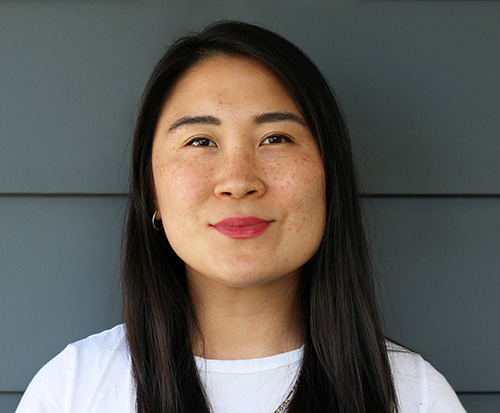
Danielle Choi
Associate Professor of Landscape Architecture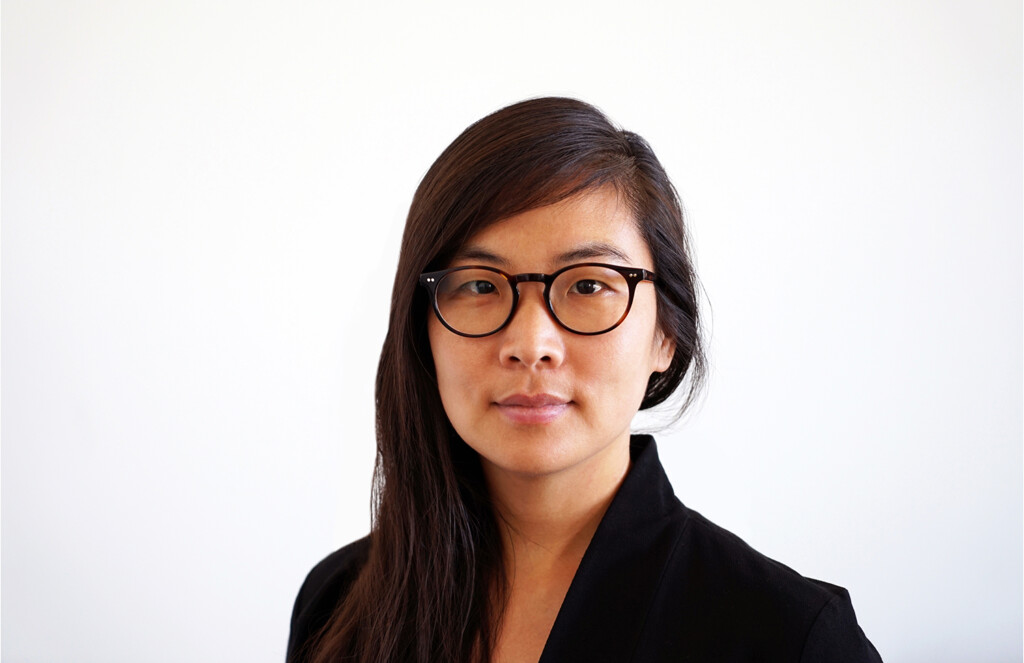
Zaneta Hong
Design Critic in Landscape Architecture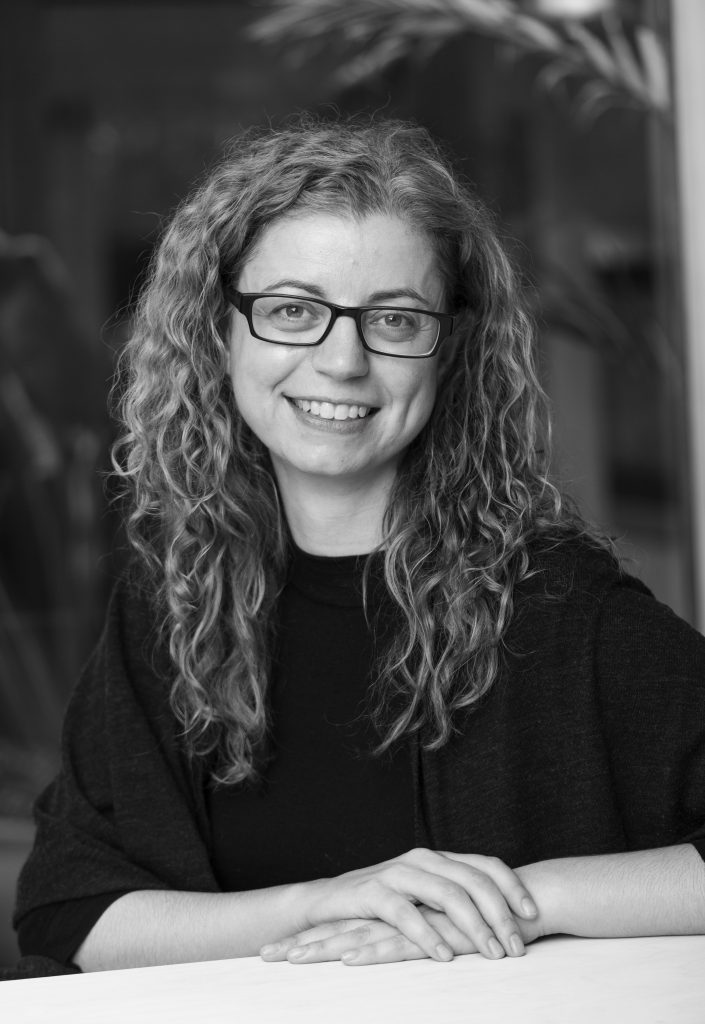
Rosalea Monacella
Design Critic in Landscape Architecture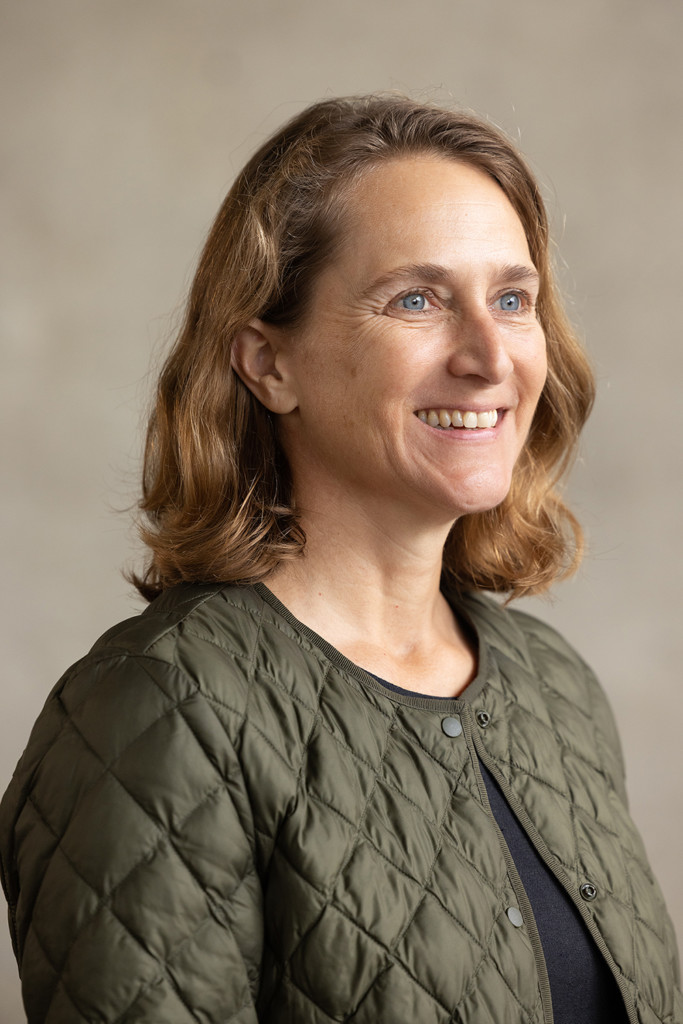
Amy Whitesides
Design Critic in Landscape Architecture
Advisory Board
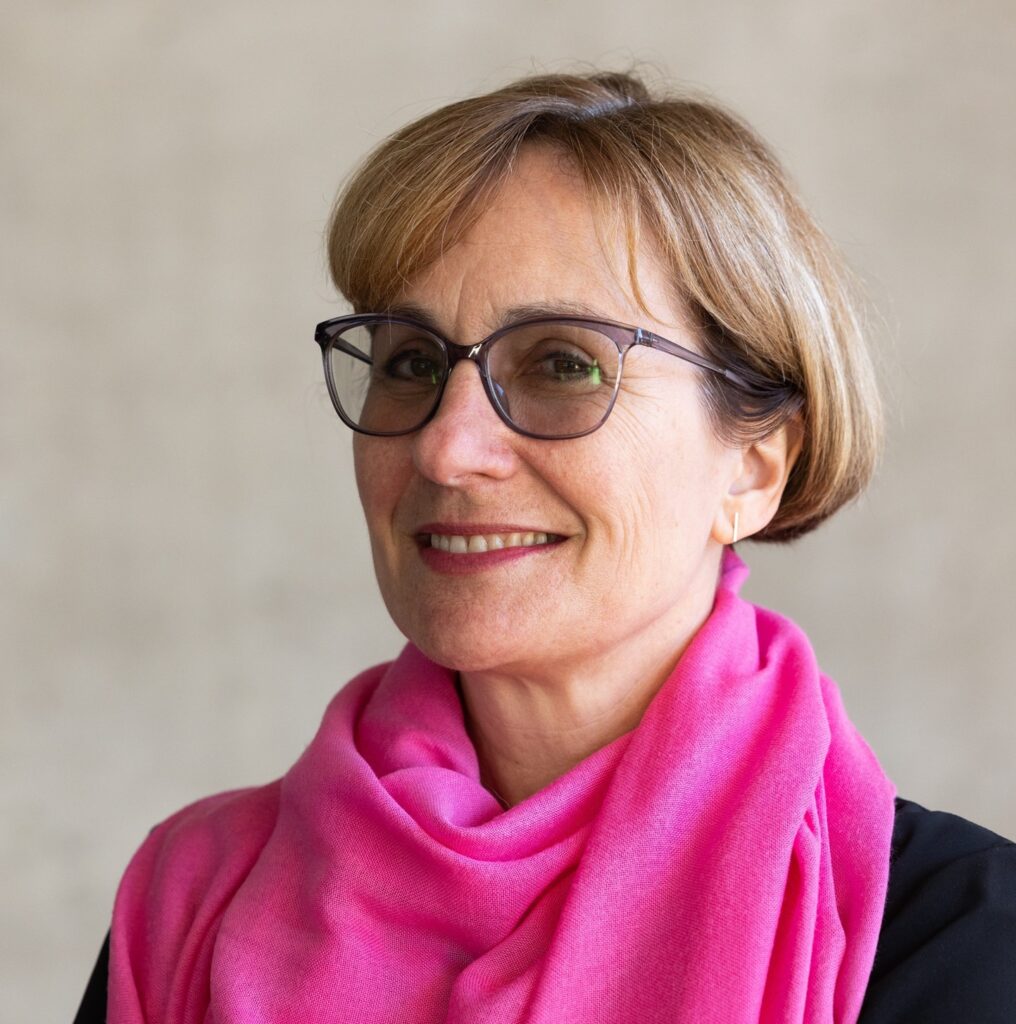
Karen Janosky
Lecturer in Landscape Architecture, Director of the Master in Landscape Architecture Program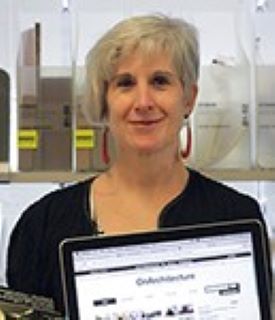
Ann Whiteside
Librarian/Assistant Dean for Information ServicesFrances Loeb Library
Past Projects
Past recipient projects are listed below. To review completed projects, please contact the Loeb Library Archives.
2009
Lana Cohen (MLA I), “Experiential Mapping of Bicycle Infrastructure: Interpreting Cyclist Movement through Biking, Barcelona”
Sean Corriel (MArch I), “Mixing and Testing Soil-Based Paving Systems”
Anthony Di Mari (MArch I), “Catching the Camanchaca: Water Collection Methods in Norte Chico, Chile”
Angeliki Evripioti (MAUD) and Sarah Thomas (MLA II), “Murs a peches: a resilient agricultural enclave”
Charles R. Howe (MLA I), “The Paraguayan Frontier: Land in Transition”
Saehoon Kim (MDesS), “Villages in Transition: Water Scarcity in Rural Landscape China”
Wanda Liebermann (DDes), “Reconsidering the Universal Landscape: Het Dorp, The Netherlands”
Erik Prince (MLA II), “Ogallala Aquifer/High Plains”
Leah Rominger (MLA I), “The Montado: Portugal’s Landscape of Economy, Ecology, and Regional Identity”
Justin Scherma (MLA I), “Allotment Gardens in the Stockholm Urban Region”
Max Hooper Schneider (MLA I), “Therapeutic Gardens for Children in Bosnia and Herzegovina”
Shannon Simms (MLA I) and Vanessa Cheung (MLA I), “Urban Agricultural Systems in Cuba: How farms fit into Havana, Cienfuegos, and Santa Clara”
Sharma Abhishek (MLA I AP/ MAUD) and Richa Shukla (MAUD), “GREENHOUSE agriCulture: Campo de Dalias, Almeira Province, Spain”
Yonathan M. Cohen (MAUD), “Sacred Geographies – Typologies of Pilgrimage in Tamil Nadu”
Anthony Di Mari (MArch I), “Methods of Regenerative Bamboo Shoot Harvesting in Southern Japan”
Jianhang Gao (MAUD), “A Well Preserved Ancient Productive Landscape”
Dan A. Handel (MArch II), “Checkerboard Cascades: A Journey into the Wilderness of Land Grants and Timber Corporations of the America Northwest”
Laura Harmon (MLA I), “After Impact: Bomb Crater Reclamation in Vietnam”
Taro Narahara (DDes), “Simulating Informal Settlements: Understanding Correlation between Landform, Environment, and Human Habitations in Yemen”
Megan Forney Panzano (MArch I), “Self Storage: A New Infrastructural Surface for Landscape Urbanism”
Ryan Shubin (MLA II), “Dhaka’s West Embankment: Infrastructure of Fortification in a Climate of Change”
Meghan Spigle (MLA I AP), “Green Walls of Paris: An Ecological Analysis”
Dorothy Tang (MLA II) and Andrew Watkins (MAUD), “All That Glitters is Not Gold”
Sarah Thomas (MLA II), “Concrete Habitat: Bats in Bridges”
Rikako Wakabayashi (MArch I AP), “The Aswan Dam and Its Influences on the River Nile”
2010
Aidan Acker (MLA I), “From Policy to Practice: Xeriscape Grant Program in Cathedral City, CA”
Jennifer Cooper (MLA II), “Port + Marsh + City”
Catherine de Almeida (MLA I AP), “Landscapes of Embedded Energy: The Life-Cycle and Use of Geothermal Energy in Iceland”
Elisa Benitez Garcia (MLA I AP), “Slate/Global flows: From China to US and Brazil and Vice Versa”
Kimberly Garza (MLA II), “Landscape Quick-Stop: Re-conceptualizing the Rest Areas of a Form of American Cultural Identity”
Erin Kelly (MLA I), “The Big Stink: Aguas Negras in the Mexico City Metropolitan Zone”
Emily Lesk (MUP) and Emily Schlickman (MLA), “Mapping the Hydrological Spatial, and Social Dimensions of Indonesia’s Batik Industry”
Jonathan Linkus (MAUD) and Jonathan Scelsa (MAUD), “Shikoku 88, The Reforestation of a Cultural Ecosystem”
Ryan Madson (MLA I), “Satoyama and the Metropolitan Edge: The ‘Slow Landscapes’ of Tokyo”
Christina Milos (MLA I), “From Wadi to Dust: Adaptive Responses to Desertification in the Lake Chad Basin”
Alpa Nawre (MLAUD), “Rhaetian Railway in the Albula/Bernina Landscapes”
Nancy Seaton (MLA I), “Trees in a Treeless Land”
Vera Shur (MArch I) and Julian Wu (MArch I), “The Lemons of the Sorrentine Peninsula: An Integrated Cultural Landscape”
Justin D. Stern (MUP), “The Development of China’s Frontier: Ürümqi and Xinjiang Across Multiple Geographic Scales”
Stephanie Tam (MArch I), “An Ecology of Vulnerability: The sewerage Crisis in Ahmedabad, India”
Andrew Zientek (MLA II), “The Ecology of Pilgrimage: A Journey to Muktinath, Nepal”
Julia Africa (MDes), “Community Gardens as Healing Spaces: Addressing the Aftermath of Hurricane Katrina In New Orleans”
Ted Baab (MArch I) and Nicole Huang (MArch I), “The Bonneville Salt Flats: Geo-Mythology in the Desert”
Hans Baumann (MLA I), “Designing for the Unknown: The Transformative Potential of Mine Clearance on the Falkland Islands”
Cristina Brodu (MDes), “Farming and Flooding: The Flourishing Connection of Men and Nature in Mekong River Basin”
Jorge Colon (MDes), “Urban Identity and the Andes Mountains: Mapping a Cultural Geography of Bogota”
John Davis (MArch I AP), “Proving Ground: The Landscape of American Automobile Testing”
Yao Dong (MAUD) and Di Xia (MArch II), “Bostans: Agricultural Generators for Istanbul’s Urbanization”
Kenya Endo (MLA I), “Landscape Point of View in Revitalizing Shrinking Cities II”
Kimberly Garza (MLA II), “Revealing Truths at the New Jersey Turnpike: Cataloging Invisible Networks and Flows at the Turnpike”
Sara Jacobs (MLA I), “Generating Aquaculture: Hydropower Development and Food Security in the Lower Mekong Basin”
Laura Janka (MAUD) and Victor Sanz (MAUD), “196,925 meters: Mapping the Border of Mexico City as an Event in the Physical and Virtual Landscape”
Tiffany Lau (MArch I), “Human-Scaled Innovation in the Growing ‘Waste’ lands of India”
Forbes Lipschitz (MLA I), “Meat Matters: Examining the Global Poultry Industry in Northwest Arkansas”
Aisling Marie O’Carroll (MLA I AP), “Urban Innovations in Soil Mechanics”
Conor O’Shea (MLA II), “Surveying Chicago’s Infrastructure at the Newberry Library Map Collection”
Natalia Polunina (MLA I), “Modification of Geomorphology”
John Todd (MArch I) and Tiffany Way (MArch I), “Reclaiming Al Badia: Sustainable Soil Management in Rural Damascus”
2011
Anne Clark Baker (MLA I AP), “Rocky Coast, Constructed Edge: Tracing Portland’s Land-Sea Habitat Typologies”
Rebecca Bartlett (MLA I), “Disaster Resiliency through Water Purification; Sri Lankan Mangrove Ecosystem Services”
Travis Bost (MDes), “Adaptive Opportunism of Infrastructural Landscapes in the Mississippi Delta”
Lindsay Chandler-Alexander (MArch I), “Children in the Landscape: The Alternative Playgrounds of Denmark”
Michael Clement (MLA I), “Back to the Earth: Reinventing the Burial Ground”
Emily Gordon (MLA I), “Everyman’s Rights: Foraging Finland”
Brendan Kellog (MArch I) and Bea Camacho (MArch I), “Farming a Landscape in Crisis: The Design and Construction of Raised Fields in the Beni Region of Bolivia”
Dongsei Kim (MDes), “The Demilitarized Zone : Redrawing the Border Between North and South Korea”
Kees Lokman (MDes), “In Search of Niagara”
Fadi Masoud (MLA II), “Deir E’lla – Border Town – Jordan River Valley”
Marcus Owens (MDes), “Animal Infrastructure, Moscow”
Jason Rebillot (DDes), “Experimental Field: Urban Practice in the Rhineland”
Emily Schlickman (MLA I), “The Ghost Fleet Landscape”
Anne Schmidt (MLA I), “Recording Deviations – Drawing a Section of America”
Alec Spangler (MLA I), “The Longest Shortcut: The Trans-Siberian Railway and the Representation of Unimaginable Extent”
Amy Whitesides (MLA I), “The Flying Fox in the Royal Botanical Gardens: Urban Ecology in Two Australian Cities”
Steven Chen (MAUD) and Xiaowei Wang (MLA I), “Nomadology of the City: Rural-urban Transhumance in Ulaan Baatar”
Lucas Correa-Sevilla (MAUD) and Michelle Ha (March I AP), “Inscribing Water on City: An atlas of access in Iquitos, Peru”
Laurent Corroyer (MDes), “Wasteshed Infrastructure [Margins]”
Aneesha Dharwadker (MDesS), “Shifting Grounds: Urban morphologies in the Yamuna Riverbed”
Natalya Egon (MArch I), “Salt & Water: The hidden geological infrastructure of two basins”
Michael Ezban (MLA I AP) and Jana Vandergoot (MLA I AP), “Exhuming the Rust Belt: Metrics and Ecologies at Pointe Mouillee”
Daniel Ibanez (MDes), “Productive Urban Landscapes in Cuba”
Lisl Kotheimer (MLA II), “Visualizing Boundaries in the Las Vegas Valley”
Xiaoxuan Lu (MLA I AP), “The Art of Touching the Ground Lightly: Mapping the crater-field in Xieng Khouang province, Laos”
Xinpeng Yu (MLA I), “Engineered Morphology: The role of hydrodynamic models in coastal ecological restoration”
Sara Zewde (MLA I), “Designing Black Space in the Zona Portuaria”
2012
Anna Cawrse (MLA II), “Paper Streets of Pittsburgh”
Rachael Cleveland (MLA I), “Spontaneous Urban Vegetation and the Shrinking City: Refiguring the urban ground in Berlin, Dessau-Rosslau and the Ruhrgebiet”
McKenna Cole (MLA I AP) and Ellen Garrett (MLA I AP), “Hydrologic Impact of Maritime Industry: A case study | Ingalls Shipyard Pascagoula, MS”
Tracie Curry (MLA I), “Thawing Frozen Infrastructure: The cultural, environmental and commercial challenges of climate change and arctic infrastructure along the Northern Sea Route”
Carolyn Deuschle (MLA I), Emily McMillan (MLA I), and Nicolas Rivard (MAUD), “Border Urbanism: Understanding public space in the Texas Colonias”
Alexia Friend (MLA II), “Runoff Landscapes: A critical study of ancient and contemporary water catchment strategies in the Negev”
Karyssa Halstead (MLA I AP) and Mara Katherine Smaby (MLA I), “Pistil Whip: Spatializing networks in the Ecuadorian floriculture industry”
Connie Migliazzo (MLA I ), “Economies of Waste: Industrial hog farm infrastructure in rural Netherlands”
Mark Pomarico (MLA I AP) and Judith Rodriquez (MLA I AP / MAUD), “Post Tsunami Satoyama: Restoring Mosaics from Mountain to Sea”
Nathan Shobe (MArch I) and Emmet Truxes (MArch I), “Cloudscapes + the Geomorphically Constrained City: Timelapse photography in La Guajira Peninsula and Medellín, Colombia”
2013
Christopher Alton (MDes), “Wood / Buffalo: Treaty 8 in the Century of Bitumen”
Erik Andersen (MLA I) and Senta Burton (MLA I), “Rangelands: Expanding Frontiers for Bison bison bison”
Alexander Arroyo (MLA I), “Terra in Extremis Toward ‘the Ends of the Earth’: Oceanic Urbanization in the Aleutian Archipelago”
Naz Beykan (MDes) and Venkata Krishna Kumar Matturi (MDes), “Atolls of Waste: Investigating waste networks of island nation of Maldives in the context of Indian Ocean”
Jennifer Corlett (MLA I), “Food Security & Resilience: Reclaiming the Acequia Landscapes of New Mexico”
Carolyn Deuschle (MLA I), “Darjeeling Tea: How Geographic Indication in a Global Marketplace Affects the Ground”
William DiBernardo (MLA II), “The Satellite and the Sensor: Dry Data and the Sensing Paralax”
Vineet Diwadkar (MLA I AP) and Tamer Elshayal (MDes), “Coastal Membrane: Engineered Flows Across the Nile Delta Estuary”
Lauren Elachi (MLA I) and Lindsey Nelson (MLA I), “Concealing the Past, Projecting the Deep Future: Experiments in Environmental Forecasting at the Onkalo Nuclear Waste Repository”
Judy Fulton (MArch I) and Hokan Wong (MArch I), “The Terrestrial Data Cloud: on Digital-Infrastructural Territories in Northern Europe”
Jason Hoeft (MArch II) and Will Lambeth (MArch II), “Landscapes of Disappearance: Addressing Emerging Design Challenges in the Rapidly Changing Landscape of Greenland”
Justin Jackson (MLA I AP), “Material Implications: Brick Fields + Rapid Urbanization in Bangladesh”
Kelly Murphy (MLA II), “Sown Together: Mapping the edge between Ljubljana and the Barje”
Hope Strode (MLA I AP), “The Geography of Strip Mining: Mapping the Effects of Strip Mining in Central Appalachia”
Marrikka Trotter (PhD in Landscape and Urbanism), “Planetary Risk in the Urban Imaginary: Lisbon After 1755”
Anne Weber (MLA I), “Imaging the Invisible: Documenting the Post-Nuclear Landscape”
2014
Dalal Alsayer (MDes), “Hidden Space | Social Space: Migrant Workers and their Spaces in the GCC”
Rebekah Armstrong (MLA I) and Vanessa Moon (MLA I AP/ MUP), “Green Desert: Acacia saligna and Atriplex nummularia in Region IV, Chile”
Christopher Bennett (MDes), “DredgeShed: Sand as Landscape, Sand as Commodity, Sand as Gold”
Jasper Campshure (MArch), “Papas chilotas: The Agricultural Crop as the Basis for Establishing Hereditary Land Rights in the Chiloé Archipelago”
Dane Carlson (MLA II), “Descent: following the kali gandaki down from the roof of the world”
Manuel Colon Amador (MLA I AP), Michalis Pirokka (MLA I AP), and Hector Tarrido-Picart (MLA I AP/ MAUD), “Urban Wild Lab: Remote Sensing Landscapes and Urban Ecologies”
Danika Cooper (MLA I AP/MDes), “Dust Kingdom: A Description of Dust in the American Southwest”
Anya Domlesky (MLA I), “Surveying Environmental Landscape Modeling: Three Physical Modelers of Coastal Processes”
Michelle Franco (MLA I), “We Ground Things Now, On Moving Foundations: Landscape Film in Theory & Practice”
Christina Geros (MLA I AP/ MAUD) and Zannah Matson (MLA I), “Redefining Urban: Kotzebue, Alaska as a Case Study for the dual influences of settlement and junction”
Stephanie Hsia (MLA I), “The Almond and the Bee: Investigating Landscape Interventions for the Greatest Pollination Quandary on Earth”
Christopher Johnson (MArch I AP), “Recreational Squatting: Skate Culture and the Appropriation of Infrastructural Landscapes”
Mikaela Pearson (MLA I AP) and David Pearson (MArch II), “Unearthing Larrea tridentate: Micro-Mapping Extensive Fibrous Root Structures”
Pablo Perez Ramos (DDes; GSD MLA I AP ’12), “Gardens of Impossibility: Comparative Study of Agricultural Landscape Morphologies in Arid Environments”
Craig Reschke (MLA I AP) and Ann Lui (MArch, MIT), “Grafted Fields: Wrestling Dirt and Data from the Combine Command Center”
Jennifer Saura (MLA I), “Landscapes of Resistance: Re-mapping Occupation in Post-crisis Spain”
Phoebe White (MLA I), “Revealing Territories: The Historic and Projective Role of the Image in the Post-Glacial Swiss Alps”
2015
Weaam Alabdullah (MLA I AP), “The Pearl Roundabout: Monumentality of a Political Landscape”
Amin Alsaden (PhD in Architecture, Landscape & Urbanism), “FRONTIERS OF POSSIBILITY: MAPPING BAGHDAD’S IMPOSSIBLE DIVISIONS”
Larissa Belcic (MLA I), “ROBOTIC COLONIZATION: Sensory Experience and the Planetary Analog as Design Strategy for Outer Space Occupation”
Sarah Bolivar (MLA I) and Jessica Booth (MLA I), “Ascent: An Inland Response to Coastal Resilience in Japan”
Azzurra Cox (MLA I), “ALTITUDINAL PORTRAITS: Transect as Ethnographic Map in Urban Bolivia”
Ghazal Jafari (DDes), “EXTENDED LANDSCAPE OF MILITARIZATION: The Next Canadian Arctic”
Mary Miller (MLA I AP), with Joseph Watson (University of Pennsylvania), “Wild Interfaces: The Western Wildlands Network and a New North American Territoriality”
Marianne Potvin (PhD in Urban Studies), “HUMANITARIAN URBANISM AND THE CHANGING GEOGRAPHIES OF REFUGE”
Chella Strong (MLA I), “Harvesting in the Interstices: An Investigation of Urban Vegetation Foraging in Three American Cities”
Emily Wettstein (MArch I/ MLA I AP), with Jacob Lipton (Harvard Law School), “tehm foh it: food insecurity in Sierra Leone”
Longfeng Wu (MDes), “Cybernetic Organism: The Intervention of Mechanization in Traditional Dike-pond Landscape, Pearl River Delta, China”
2016
Oliver Curtis (MDes ’17), “Wildfires at the Wildland-Urban Interface: Adaption and Feedback”
Alberto Embriz de Salvatierra (MLA/MDes ’17), “Reed Urbanism: Grass Infrastructures in the Floating City of Uros”
Ellen Epley (MLA ’17), “Lay of the Land: Visualizing the Permitting Structure for Surface Mining and Reclamation in the United States and Canada”
Kent Hipp (MLA ’17), “Drought in Melbourne: Surveying a Landscape of Water Scarcity”
Jia Joy Hu (MLA ’17), “Iceland Afforestation: Envisioning Value in a Treeless Landscape”
Justin Kollar (MArch/ MUP ’17), “Landscape Colonization/Cultivation: Collective Memory and Politics of the Taiwan Sugar Corporation”
Qi Xuan (Tony) Li (MLA ’17), “Landscape of the Unreal: An Evaluation and Projection of the Hudson River’s Virtual Landscape”
Sophie Maguire (MLA ’17), “The State of Play: Reimagining the Role of Design in London’s Adventure Playgrounds”
Kira Sargent (MLA ’17), “Dynamic Climate/Dynamic Engagement: Precedents and Opportunities for Designing with Tidal Flux in a World of Rising Seas”
Julia Smachylo (DDes ’19), “Nature State: Managed Forest in Southern Ontario”
Jonah Susskind (MLA ’17), “Urban Lumber Resource Management: An Investigation of New Growth Along the American Rust Belt”
Jane Zhang (MDes ’17), “Vernacular Landscapes of Stone Oak Tofu in Zhejiang, China”
2017
Madeleine Aronson (MLA ’18), “Wild Mushroom Economies and Landscape Disturbance: Leveraging the Social and Ecological Potential of Wild Mushrooms in the Pacific Northwest”
Tami Banh (MArch/MLA ’18), “Engineered Nature: Studying the History of Ecological Intensification in Lower Mekong Basin through Critical Cartography”
Michelle Benoit (MLA ’18) and Matthew Wong (MLA ’18), “Alternate Futures”
Emily Drury (MLA ’18), “Representing Representation: The Voting District & Redistricting as Grounded Site of Inquiry”
Gideon Finck (MLA ’18), “Untrammeled by Design”
Yousef Hussein (MArch ’18), “Kuwait’s Urban Landscape: The Aerial View of Modernist Colonial Planning”
Charlotte Leib (MLA ’18), “Surveying Sites Unseen: Trees, Representation, and Power in the 19th Century American Preservation and Conservation Movement”
Alison Malouf (MLA ’18), “Great Expectations: Designing for Privacy in the Smart City”
Stacy Passmore (MLA ’18), “From Drain Age to Retain Age: The Beaver’s Tale of Arid Landscapes: An Illustrated Catalogue”
Estello Raganit (MLA ’19), “Queering Landscapes: Cruising, Sexual Performance, and Social Liberation in Dongdan Park, Beijing, China”
Phia Sennett (MLA ’19), “Piscary: Impressions of Fishing Gear in the Salish Sea”
2018
Joan Chen (MLA ’19), “Duplicity of Landscape: Re-imaging Design Interventions in Rural Southwest China”
Lanie Cohen (MLA ’19), “Recession Ecologies in Las Vegas, Nevada: A case for how economic latencies and themed casinos provide a new model for ecological urbanism”
Mark D. Heller (MLA/MUP ’19), “Slash and Burn: Reconciling Riau’s Illegal Palm Landscape Through Mapping”
Emily Hicks (MLA ’19) and Melody Stein (MLA ’19), “Upstream: Wild Rice, Food Sovereignty, and 10,000 lakes in the Northern Minnesota Watershed”
Jenjira Holmes (MLA ’19), “Hydrophyte Invasion: Mapping Chao Phraya’s Aquatic Ecological Structure with Water Hyacinth”
Danica Liongson (MLA ’19), “Beauty & Bounty: The Threatened Legacy of Olive Trees in the Mediterranean”
Deni Lopez (MDes/MAUD ’19) and Nadyeli Quiroz (MLA ’19) for “Disaster as an Opportunity: Alternatives for Debris Management at Los Perros’ Riverbank in Oaxaca, Mexico”
Grace Suthata Jiranuntarat (MArch ’19) and Sonny Xu (MArch/MLA ’18), “Chemical Valley: Site Investigation of Sarnia, Aamjiwnaang First Nation and CN Rail”
Isaac Stein (MDes/MLA ’20) and Maggie Tsang (MDes ’19), “Lines in the Sand: Submerged Property and the Paradoxical Landscapes of Gulf Coast Barrier Islands”
Amanda Walker (MLA ’19), “Red Dirt – Patterns of Exploitation: The Case of Bauxite Mining in Jamaica”
Anson Ting Fung Wong (MLA ’19), “Stone Wall Trees: ‘Unconventional’ Urban Landscape in Hong Kong”
2018 GSD-Courances Design Residents
Mariel Collard (MLA/ MDes ’19)
Juan David Grisales (MLA/ MDes ’20)
2019
Colin Chadderton (MLA ’20), “Sensors in the Landscape: A Literature Review of Current Sensor Deployment in Landscapes, and Three Case Studies of their Application in Peatlands”
Kira Clingen (MLA ’20) and Edyth Jostol (MLA ’20), “Falling Stands: The Role of Climate Change, Cultivation and Culture surrounding Cryptomeria Japonica in the 21st century”
Armida Fernández (MDes ’20) and Luis Enrique Flores (MLA ’19), “Designing with Communities of the Agricultural Industry in Mexico”
Dana Hills (MLA ’20), “Newborn Lakes in Glacier National Park: Investigating the Succession of Lakes Created by the Acceleration of Glacial Melting”
Zoe Holland (MLA ’20) and McKenna Mitchell (MLA ’20), “Earth, Wind, and Fiber: Imaging Marseille’s Digital Landscape”
Cecilia Huber (MLA ’20), “Patchwork Horizon: Patterns of Resource Conservation and Farm Subsidies in the American Prairie Landscape”
Kimberley Huggins (MLA ’20), “River as a Person”
Malika Leiper (MUP ’19) and Connie Trinh (MLA ’20), “Urban Fabrics: Garments, Textiles and Urbanization in Cambodia”
Ting Liang (MLA/ MAUD ’19), “The Socialist Utopia: Reconciliation Between City and Countryside Field Investigation of Preexisting People’s Communes in Rural China”
Jeffrey S. Nesbit (DDes ’20), “Soil for Space: A Critical History of Earthmoving at Cape Canaveral”
Adam Kai Chi Ng (MLA ’19), Qiaoqi Dai (MLA ’19) and Xiwei Shen (MLA ’19), “Eco-Immigrant”
Stefano Romagnoli (MLA ’19) and Soledad Patiño (MAUD ’20), “Fracking Landscapes: The Vaca Muerta Case during the World’s Energy Transition”
Kari Roynesdal (MLA ’20), “Queer Ecologies: Controversial Human + Plant Communities”
Zishen Wen (MLA ’19), “Brownfield on Extraterritoriality: Waste Disposed of in Global, Recycled in Rural China”
Chohao Victor Wu (MLA ’19), “Camouflage Island: Re-Imagining the Contested Landscape of Kinmen”
Ziwei Zhang (MDes ’20), “Whose Maps are These? Mapping versus Indigenous Forest Spatiality in West Kalimantan, Indonesia”
2019 GSD-Courances Design Residents
Michael Cafiero (MLA ’20), “Regenerative Connections”
Yoni Angelo Carnice (MLA ’20), “The World Was My Garden”
2020
Lamia Almuhama (MLA I AP ’20) and Sarah Fayad (MLAUD ’20), “Fragile Landscapes: The Effect of Temporal Habitation on the Arabian Desert’s Ecosystem”
Kuan-Ting Chen (MDes ’21) and Yun-Ting Tsai (MLA I AP ’20), “Pioneering Watersheds: Shifting Culture of Hydrological System in Taiwanese Hakka Settlements”
Bert De Jonghe (MDes ’21), “Greenland in Transit”
Isabella Frontado (MLA I / MDes ‘20), “Maintained Future Histories of Disappeared Ground”
Brittany Giunchigliani (MLA I ’21), “Inundate: Visualizing Boundaries of Contamination in the Greater Houston Area”
Alana Godner-Abravanel (MLA I ’21), “Rebuilding Paradise: Living with Fire in Northern California”
Juan David Grisales (MLA I AP / MDes ’21), “Re-Mapping Humboldt’s 1807 ‘Tableau Physique’ Through Climate Change: An Upslope Biogeographical Migration on the Tropical Andes”
Shira Grosman (MLA I AP / MDes ’21) and Jonathon Koewler (MLA I AP ’20), “Extraction in the Public Domain: Projecting Environmental Repercussions of Greens Creek Mine in Tongass National Forest”
Saeb Ali Khan (MAUD ’20) and Supriya Ambwani (MLA I ’22), “City of Memories: Mapping and Reconstructing Hyderabad’s Water Network”
Esther Kim (MLA I ’21), “Thawing Edges: Capturing Subarctic Permafrost Temporal Dynamism through Photogrammetry”
Gena Morgis (MLA II ’21), “Flood from Within: Mapping Systemic Failures and Future Opportunities for Water Infrastructure in the Mississippi River Basin”
Alykhan Neky (MLA I AP ’21), “A Dying Tradition”
Maxwell Smith-Holmes (MLA I ’21), “Landscape, Infrastructure, and Traces of ‘Total Planning’ in St. Petersburg, Russia”
Alysoun Wright (MLA I AP / MUP ’21), “Forest Management in ‘Feral Forests’: The Social Transformation and Afforestation of Rural Portugal”
2020 Courances Design Residents
Caroline Craddock (MLA I ’21), “Balancing Historic Conservation and Climatic Adaptation at the Château de Courances”
Dominic Riolo (MLA I ’21), “Courances as Sustaining, Proto-Modernist Garden”
2021
Ayami Akagawa (MLA I ‘21), “Feeling Rooted: Recovery from Natural Disaster and Identity Expression in New Home through Incremental Green Infrastructures in the Philippines”
Chun Chen (MLA I AP ‘21) and Sohun Kang (MArch I ‘21), “Landscapes of Women of Seas: Ama and Haenyeo”
Echo Chen (MLA I ‘21), “Cultural Identities in Intangible Heritages: An Ethnologic Study of the Rural Communities Featuring the Covered Bridge in Southeast China”
Jake Deluca (MLA I AP ‘22), “Un-Living Record: In Analysis of Our Social and Psychological Relationship to the Cemetery”
Ian Erickson (MArch I ‘24), “On Becoming Productive: Representing Shifting Regimes of Value Extraction in the Guadalupe-Nipomo Dunes Territory”
Lianliu Guo (MLA I AP ‘22) and Tianyu Su (DDes ‘23), “How Healthy Are They Doing in the Parks?: Understanding Urban Parks’ Perceived Health Impacts on Visitors Using Large-Scale Spatial Data”
Aijing Li (MUP ‘22) and Claire Wang (MUP ‘22), “Parks on the Edge: Big Data Analytics on Park Visits in Segregated Neighborhoods”
Alison Maurer (MLA I ‘22), “Renewal and Reciprocal Labor: Exploring Iceland’s Ecologically Driven Economic Recovery”
Caleb Negash (MArch I ‘22) and Sam Valentine (MLA II ‘21), “Hope in the Dismal: Interpreting Landscapes of Self-Determination and Self-Liberation in the Great Dismal Swamp”
Lara Prebble (MLA I ‘23), “Learning Through Play: Exploring the Roles of Outdoor Learning Environments in Finnish and Sámi Finland”
Julia Rice (MLA I ‘22), “Perspectivist Agriculture: Reimagining Modern Food Systems through Indigenous Knowledge”
Polly Sinclair (MLA I ‘21) and Ada Thomas (MLA I ‘21), “The Spatial Imagination of Satoyama: Engaging Field Methods for Expanded Knowledge Production in Landscape Architecture”
Shi Tang (MLA II ‘21) and Xiaoji Zhou (MLA II ‘23), “Deaf Space in Landscape Design: Making Deaf Visible Through Spatial Investigation and Community Engagement in Wuhan, China”
Michele Turrini (MLA II ‘21), “Sacrificial Land: Working with Peripheral Communities in Bangkok’s Decision-Making Watershed”
Morgan Vought (MLA I ‘22), “If You Don’t Build Anything, You Don’t Exist: Redefining Tribal Recognition in Western Courts through Critical Ethnobotanical Cartography”
2022
Catherine Auger (MLA I AP ’23), “Noise1”
Matthew Gorab (MLA I ’23), “Rest Stopping Across America: An Investigation of Northeast and Midwest Rest Stops”
Diana Guo (MLA I ’22) and Tianwei Li (MLA I ’22), “Berries of Abundance: Renewing Lifeways Through Cultural Foodscapes in Arctic Canada”
Julia Hedges (MLA I ’24), “Immaterial Earth: Kentucky Karst Above and Below”
Yazmine Mihojevich (MLA I ’23), “Recovering Roger Young Village”
Dora Mugerwa (MLA I ’24), “Luganda and the Land: How Language Reimagines Landscape”
Chandani Patel (MLA I AP ’23), “Environmental Commoning in Loktak Lake, Manipur”
Marina Recio (MLA I ’22), “Seeing Through Lichen: Making Air Pollution Visible in Mexico City”
Scarlet Rendleman (MLA I ’22), “Animate Entanglements: Spiritual Ecologies of Native Hawai’ian Land-based Ethics and Practices”
Kevin Robishaw (MLA I ’23), “Never the Same River Twice: Un-Damming and Re-Designing America’s Rivers”
Berit Schurke (MLA I ’22), “Of Shifting Coastlines: Articulating Arctic Coastal Adaptation Strategies in Anticipation of the Deep Thaw”
Rebecca Shen (MLA I AP ‘23), “Tending Sanctuary: Exploring Entanglements of Land Stewardship and Multispecies Community at Vine Sanctuary”
Liwei Shen (MLA I ’22) and Ying Zhang (MLA I ’22), “Atlas of Post-Afforested Desert Landscape: An Ecological Study of the Mu Us Desert’s Greening Effort in China’s Three-North Shelter Forest Program”
Elaine Stokes (DDes ’24), “Dammed Landscapes: Riparian Infrastructure at the Mississippi’s Headwaters”
Juan Villalon (MAUD ’22) & Kawthar Marafi (MLA I AP ’23), “Aceituna/Zaytoon landscapes: Olive Tree Cultivation Atlas across the Trans-Gibraltar Region”
Erin Voss (MLA I ’23), “The Implication of Cultural Seascapes for the Design and Management of Polynesian Islands”
Rachaya Wattanasirichaigoon (MAUD/MLA I AP ’24), “The Lightscapes of Fireflies”
Sijia Zhong (MLA I AP ’22), “Land the Void”
2023
Angelica Oteiza (MLA I AP ’23) and Arty Vartanyan (MLA I AP / MLAUD ’23), “Bottled at Source? Sources, Infrastructures, and Cultures of Water in Monterrey, Mexico”
Caroline Koh Smith (MLA I ’24), “Oranges, Cameras, Aqueducts: Constructing the Image of Los Angeles”
Crane Sarris (MLA I ’24), “Solastalgia: Re-envisioning Our Landscapes of Destruction”
Cynthia Zhuge, (MLA I ’24), “Measuring Deer-Vehicle Conflict Risk using streetscapes: Habitat Connectivity Study in California”
Eric Schwartz (MLA I ’25), “American Chestnut, Unbound: A Site Anthology of the Past, Present, and Future of Castanea Dentata”
Gracie Meek (MLA I AP ’24) and Jialei Tang (MUP ’23), “Bandelier National Monument”
Hana Cohn (MLA I ’24), “Hidden in Plain Sight: Crude Extraction in Los Angeles”
Justin Booz (MLA I ’24), “Omnipresence: Atmospheres and Emergening Political Ecologies in New York City”
Kai Walcott (MLA I ’24), “Victorian Parks of the Colonial West Indies: Exploratory Case Studies of Two Historical Urban Parks in Kingston, Jamaica”
Miguel Lantigua Inoa (March II / MLA I AP ’24), “Living with Water Ecologies: Rejuvenating the Hybrid Waterbodies of North India”
Nick Gray (MLA I ’23) and Hana Kim (MArch I ’25), “Batdam: The Projective Ecologies of Stone Culture on Jeju Island”
Olivia Poston (MDes ’23), “Provisional Landscapes of Industry: compositions of sub-arctic inhabitation”
Rocio Alonso (MLA I AP ’24) and Elaine Zmuda (MLA I AP ’24), “Pairing the Paisajes: Understanding the Entanglements of Wine Culture and Landscape Across Argentina’s Wine Producing Regions”
Rose Van Grinsven (MLA I ’25), “Landscapes of Abundance: Sustainable Systems for Emerging Economic Landscapes in Lilongwe, Malawi”
Ruijie Liu (MLA I AP ’23) and Shuyue Liu (MLA I AP ’23), “Landscape Palimpsest of Hidden Labor: Uncovering the Hidden Labor Landscape of Chinese Workers in the Transcontinental Railroad”
Sakiko Isomichi (MLA I ’25), “Identifying Barriers to Planting Native Species: Residential Properties on Martha’s Vineyard”
Tanushri Dalmiya (MAUD ’23), “Parched: Living in a Lithium Landscape”
Vanessa Harden (DDes ’24), “Designing the Fungal City: A framework for connecting mycorrhizal networks in the built environment”
Yuqi Zhang (MLA I ’24) and Xinran Ma (MLA I ’24), “Wonderland of Weeds: An interactive picture book of Boston spontaneous plants”
2023 Courances Design Resident:
Anne Field (MLA I ’25), “Field to Forest: Land Management Practices as Tools for Resilience”
2024
Andrew O Murchu (MLA I AP/ MUP ’26), “Landscape Architecture for Intercommunal Conflict in Ijebu-Ife, Nigeria”
Anne Tong (MLA II ’25) and Issa Seoyoung Lee (MLAUD ’25), “Unraveling the Entanglement: A Case Study of Baengnyeong Island’s Cold War, Everyday, and Natural Landscapes”
August Sklar (MLA I ’25), “Notes from The Void”
Austin Sun (MArch I / MLA I AP ’24), “Thin and Thick Sections: Tracing the Geologic Supply Chain of Vermont’s Danby Marble Quarry”
Brian Kohan (MLA I AP ’24), “Weaving Futures: Sustaining Ancestral Basketry Traditions within Lima, Peru’s Coastal Wetlands”
Dafne Saint-Hilaire (MArch I / MLA I AP ’25), “Copper Americana: Landscape Re-Mined”
Emily Hayes (MLA I ’24), “In A Hole in the Ground”
G Laster (MLA I ’24) and Nicky Rhodes (MArch I ’26), “Outside the Lines: Crafting a Puyallup River Colorshed”
Harish Krishnamoorthy (MAUD ’25), “Erosion at the Tanks”
Hayden Bernhardt (MLA I ’24), “Step by Step: The Influence of Public Stairways on Pittsburgh’s Orphan Houses and its Urban Landscape”
Isabel Lewis (MLA I ’24), “Landscapes of Asylum, a compendium of care”
Isabella Simoes (MLA I AP ’25) and Pedro Brito (MLA I AP ’25), “Archipelagos of the River Sea: Between the Dry and Flooded Amazons”
Juan Fernandez Gonzalez (MArch I ’25), “Access Before Infrastructure: Vancouver Power Line Rights-of-Way”
Leila Breen (MLA I ’24), “In Search of King Cane”
Leyla Uysal (MDes ’24), “Project of Hope: Re-Imagining Indigenous Lands; Recovery through Memory”
Makio Yamamoto (MLA I AP/ MUP ’26), “Taking(s) on the Mississippi”
Markel Uriu (MLA I ’25), “Cultivated Roots, Troublesome Blooms: Multivalent Meanings behind Queen Annes Lace”
Oliver Oglesby (MLA I AP / MUP ’26) and Steven Li (MUP ’24), “Parks of the Rio Grande: Bifurcated, Gateway, and Binational Borderscapes”
Rebecca Schalip (MArch I / MLA I AP ’26) and Olivia Tremml (MArch ’25), “Textile Terrain: Scaffolds for Urban Regrowth”
2024 GSD-Courances Design Residents:
Garrett Craig-Lucas (MLA II ’25), “Currents: Documenting Connections Between Perception, Movement and Water Flow in the Garden”
Jie Zheng (MLA I ’24), “Whispers of Flow: An Ecology Odyssey Through the Water of Courances”
2025
Bhavya Jain (MDes ’25), “Evolving Infrastructures: A case of Irrigation landscapes in Ladakh”
Duncan Steele (MArch I ’26) and Alison Zhou (MArch II ’25), “Tapestry of Rags: Decompositional Time in the Scottish Bog”
Ethan Olson (MLA I ’26), “Translating the Chaparral: Making Southern California’s Shrublands Legible”
Iris Quping Li (MLA I ’26) and Winkie Tian (MLA I ’26), “Bridging Plant Identification and Design with Machine Learning and AI”
Isabelle Lee (MDes ’26), “Re-Cultivating the Tropics: Revitalizing Malaysia’s Abandoned Rubber Plantations Through Narratives of Smallholder Resilience”
Joseph Henry Kennedy, Jr. (DDes ’26), “Perennial Projects: Biodegradable Seed Pods for Ecosystem Restoration”
Kai Blatt (MLA I AP / MArch I ’26) and Caroline Brodeur (MLA I AP / MUP ’26), “On the Abstraction of Water: Mapping the Construction of Crisis”
Kei Takanami (MArch I ’25), “Timber Ties in the Pacific Northwest”
Marco Fiorino (DDes ’27), “Lost Practices, Shifting Landscapes: Animals, Humans, Folklore, and Magic in the Sila Upland Region of Southern Italy”
Mauricio Cohen Kalb (MLA I AP / MAUD ’25), “Anthropogenic Waterscapes: A Hybrid Field Guide to Valle de Bravo’s Lakeshores”
Michael Bryan II (MLA I ’26) and Tyler White (MUP / MDes ’26), “The Future of Black Landscapes”
Miriam Hernández Medina (MLA I ’26), “El Río entre nosotros / The river between us: Futures for the Rio Bravo / Rio Grande”
Ryota Sunakawa (MLA I AP ’26), “Textures of the Ocean: Depicting the Geological Patterns of Magang Intertidal Zone, Taiwan”
Xinying Li (MLA I ’26) and Yihan Zhang (MLA I ’26), “Fish Scale Polders as Flexible Infrastructure: A Symbiotic Approach to Flood Management and Pollution Control”
Yupeng Gao (MArch I ’26) and Robyn Wang (MLA I ’27), “The Wild Great Wall: Obsolescence and Renewal”
Zihao Wei (MArch I AP ’25), “Maintenance Urbanism – Uncovering the Hidden Facilities of Municipal Public Works”
2025 GSD-Courances Design Residents:
Noam Baharav (MLA I ’27), “Garden:Farm”
Mara Basich-Pease (MLA I ’27), “Sensing Scent-Scapes”
Valentine Geze (MDes ’26), “Deposits of Memory: Sediment and Hydrology in the Courances Landscape”
Norman T. Newton Prize
Established in 1992 by Lyyli Lamsa Newton in memory of her late husband, Norman T. Newton, Charles Eliot Professor of Landscape Architecture Emeritus, the Norman T. Newton Prize is awarded annually to a graduating landscape architecture student whose work best exemplifies achievement in design expression as realized in any medium.
Recent recipients include:
- 24-25 Justin Booz (MLA I/MDes Mediums)
- 23-24 Lucas Dobbin (MLA I AP)
- 22-23 Sonia Sobrino Ralston (MLA I AP)
- 21-22 Sophie Mattinson (MLA I)
- 20-21 Brittany Giunchigliani (MLA I)
- 19-20 Siwen Xie (MLA I)
- 18-19 Ting Liang (MAUD/MLA I AP)
- 17-18 Matthew Wong (MLA I)
- 16-17 Jeremy Hartley (MLA I) and Hannah Gaengler (MLA I)
American Society of Landscape Architects Awards
Nominated by the faculty in the GSD’s Department of Landscape Architecture, the American Society of Landscape Architecture (ASLA) awards a Certificate of Honor and a Certificate of Merit to students enrolled in the Master in Landscape Architecture program, who have “demonstrated a high degree of academic scholarship and of accomplishment in skills related to the art and technology of landscape architecture.”
For past recipients, please visit the ASLA website.
Find deadline and submission information.Peter Walker and Partners Fellowship for Landscape Architecture
Established in 2004 by PWP Landscape Architecture, the Peter Walker and Partners Fellowship for Landscape Architecture is an annual travel award for graduating GSD students to advance their understanding of the body of scholarship and practices related to landscape design.
The fellowship will be granted following graduation to support travel that extends the learning experience of the formal educational program by providing young landscape architecture designers an opportunity to spend a concentrated period of time studying landscape design in various parts of the world. The fellows are expected to deliver a lecture, participate in a symposium, or another event to share their travel research with the GSD community. Candidates are selected from the graduating class by the faculty in the Department of Landscape Architecture, based on accomplishment in landscape design.
Recent recipients include:
- 24-25 Cory Page (MLA I/MUP) & Dafne Saint-Hilaire (MLA I AP/MArch I)
- 23-24 Gracie Meek (MLA I AP) & Daniella Slowik (MLA II)
- 22-23 Pavin Banternghansa (MLA I AP) & Lara Trimarco Prebble (MLA I)
- 21-22 Scarlet Rendleman (MLA I) & Liwei Shen (MLA I)
- 20-21 Gena Morgis (MLA II) & Dominic Riolo (MLA I)
- 19-20 Carson Fisk-Vittori (MLA I) & Danica Liongson (MLA I/MDes ULE)
- 18-19 Matthew Macchietto (MLA II)
- 17-18 Sonny Meng Qi Xu (MLA I AP/MArch II)
- 16-17 Sophia Geller (MLA I)
Jacob Weidenman Prize
The Jacob Weidenman Prize is awarded annually to a Master in Landscape Architecture student, who has shown outstanding ability and talent in design. The prize was established in 1935 through the bequest of Marguerite Weidenman, daughter of Jacob, who, between 1829 and 1893, devoted himself to the study and practice of landscape architecture.
Recent recipients include:
- 24-25 Jorge Gonzalez Yanez (MLA I AP)
- 23-24 Pie Chueathue (MLA II)
- 22-23 Kevin Robishaw (MLA I)
- 21-22 Lucy Humphreys Chebot (MLA I)
- 20-21 Alysoun Wright (MLA I AP/MUP)
- 19-20 Jonathan Koewler (MLA I AP)
- 18-19 Melody Stein (MLA I)
- 17-18 Daniel Berdichevsky (MLA I AP)
- 16-17 Xun Liu (MLA I AP)
